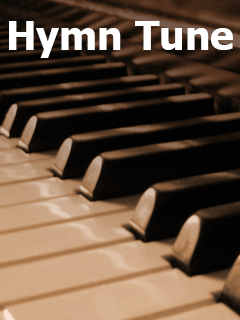- |
User Links
ROK NOVY (11177)
Tune Information
| Title: | ROK NOVY (11177) |
| Meter: | 8.8.8.6 |
| Incipit: | 11177 11237 33445 |
| Key: | f minor/g minor |
| Source: | T. Zavorka's Kancional, 1602;Slovak carol tune |
Texts
Greet Now the Swiftly Changing YearThe Lord Almighty Spoke the Word
The Lord Almighty spoke the word,
the morning stars together sang;
the word he spoke through chaos broke,
the worlds in order sprang.
Alternative Tunes
ROK NOVY is an anonymous Slovak tune that was first published in Tobias Zavorka's Kancional of 1602, though it may date back into the fifteenth century. The tune title means "new year" and is the incipit of the Slovak Old/New Year text "Rok novy zase k nam prisel," traditionally associated with this music (PHH 444). Zavorka served as a pastor and dean in the Bohemian city of Dubrava. Kancional was an important Bohemian Brethren hymnal containing 770 tunes (usually dated 1602, the year in which work on the hymnal began, although it was published around 1606).
The tune is a fine match for the striking text: a short initial phrase launches the remainder of the melody, which flows on in one long line. The harmony, prepared in 1984 by choral composer Dale Grotenhuis (PHH 4), is well suited to part singing. Raise the final tenor note at the end of stanza 3 to conclude with a bright major chord.
--Psalter Hymnal Handbook, 1988
Notes
ROK NOVY is an anonymous Slovak tune that was first published in Tobias Zavorka's Kancional of 1602, though it may date back into the fifteenth century. The tune title means "new year" and is the incipit of the Slovak Old/New Year text "Rok novy zase k nam prisel," traditionally associated with this music (PHH 444). Zavorka served as a pastor and dean in the Bohemian city of Dubrava. Kancional was an important Bohemian Brethren hymnal containing 770 tunes (usually dated 1602, the year in which work on the hymnal began, although it was published around 1606).
The tune is a fine match for the striking text: a short initial phrase launches the remainder of the melody, which flows on in one long line. The harmony, prepared in 1984 by choral composer Dale Grotenhuis (PHH 4), is well suited to part singing. Raise the final tenor note at the end of stanza 3 to conclude with a bright major chord.
--Psalter Hymnal Handbook, 1988
Timeline
Arrangements
Harmonizations, Introductions, Descants, Intonations
|
Organ Solo
|


 My Starred Hymns
My Starred Hymns


